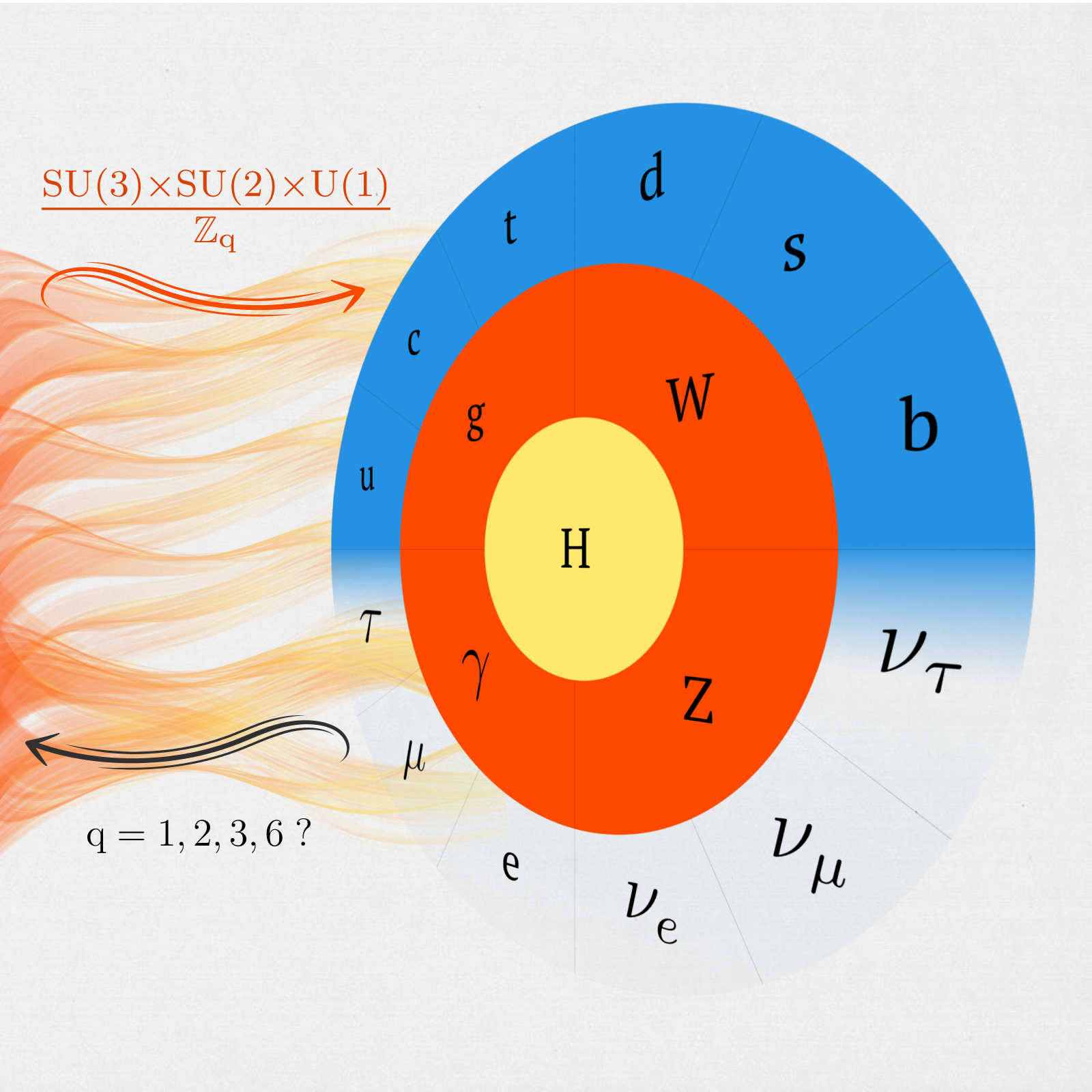















Topological responses
The local Lie algebra of the Standard Model (SM) is su(3)×su(2)×u(1), yet its global gauge group, GSMq=SU(3)×SU(2)×U(1)/ℤq, q=1,2,3,6 remains undetermined. Building on previous work on 4d anomalies and 5d cobordism invariants, we classify lower-dimensional invertible field theories (iFTs) or symmetry-protected topological states (SPTs) in 4d, 3d, 2d, and 1d. While the integer SPTs are hard to detect, the fractional SPTs produce measurable topological responses. In particular, the symmetry fractionalization labeled by k∈ℤ6/q in [arXiv:2411.18160] introduces the symmetry-enriched SM variants, denoted as SM(q,k). We further introduce a new integer n series of baryon-minus-lepton (B−L)-like U(1) symmetries, Xn≡n(B−L)+(1−nNc)Ỹ with electroweak hypercharge Ỹ , n≥1, Nc=3, where the charge qXn=qỸ modn. Analyzing the symmetry-enriched SM with 0-form and 1-form symmetries (G[0],G[1]), symmetry-twist group homomorphism ρ, and symmetry frationalization obstruction [β], their spacetime-internal gauge bundle constraints, and their mixed anomalies, we derive the fractional topological response σn(q,k)=q(1−n)gcd(2,n)2n+kq6mod1. Our σn response requires more general Spinc manifolds for odd n and Spin manifolds for even n. For a given n (with n≥7 and n≠10,12,15,30), σn uniquely fixes the gauge group parameter q and fractionalization label k. Moreover, using pairs such as (n1,n2)=(2,3),(2,5),(3,4),(3,5),(4,5), etc. uniquely distinguishes SM(q,k). Our results illuminate the global structure of the SM gauge group via measurable topological responses.
Arxiv (2025)